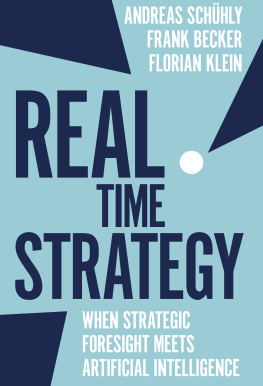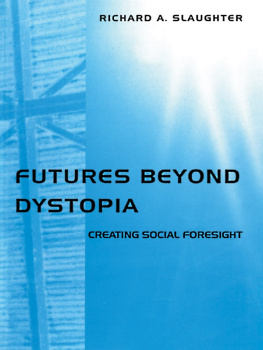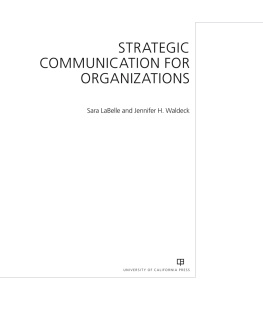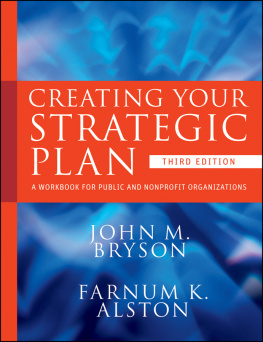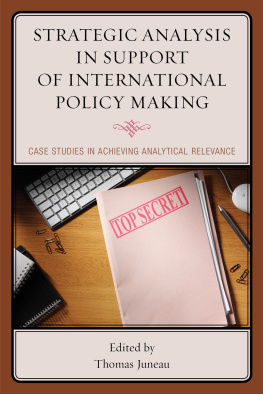ISBN 9783110672909
e-ISBN (PDF) 9783110672916
e-ISBN (EPUB) 9783110672923
Bibliographic information published by the Deutsche Nationalbibliothek
The Deutsche Nationalbibliothek lists this publication in the Deutsche Nationalbibliografie; detailed bibliographic data are available on the Internet at http://dnb.dnb.de.
2020 Walter de Gruyter GmbH, Berlin/Boston
Foreword
Against the backdrop of rising trade tensions and slowing economic growth worldwide, the public policymakers of many countries have to grapple with increasingly complex issues ranging from ageing population to rising healthcare costs. Meanwhile, industries struggle to keep up with technological advances (e.g. robotics, internet of things, artificial intelligence and big data) to embrace the fourth industrial revolution (Industry 4.0).
The need for strategic foresight has never been so critical. Strategic foresight is a discipline comprising methods and tools that enable leaders and managers to broaden their perceptions of what and how the future possibilities may unfold, so as to identify and evaluate the various strategic options for decision making and resource mobilization to achieve the medium- to long-term vision. Institutes of higher learning and educators are expected to play a role in building the strategic foresight capability in the public and private sectors, thereby contributing to the national innovative capacity.
This book provides a good overview of strategic foresight discipline and the development of systemic foresight methodology (SFM) as a conceptual framework for designing and implementing foresight activities across multiple phases, while recognizing the interdependencies among multiple stakeholders, events and processes. Using a case-based approach, this book is written in a storytelling fashion that describes how the National Robotics R&D Programme Office of Singapore applies a range of foresight methods such as horizon scanning to develop market insights about service robotics, literature and patent analysis to gather technology insight, scenario stories to assess future uncertainty and impact, as well as roadmapping and Delphi survey to generate and validate integrated robotics R&D roadmap.
This book complements existing foresight methods with tools from other disciplines such as customer discovery from strategy management and quality function deployment from engineering, to develop future commercialization strategy for the organization. Throughout the cases, the challenges encountered at each SFM phase are illustrated and the strategic responses highlighted to lend breadth and depth to readers appreciation of the strategic foresight concept. With this book, the authors hope to empower the readers with the necessary knowledge and tools to foster the building of strategic foresight capability that is critical in preparing organizations for changes, and steering them toward the desired future.
I applaud the editor and authors for their contribution to the practice of strategic foresight and its effective application in the pertinent topic of service robotics.
Professor Goh Cher Hiang
Engineering Design Innovation Centre
Faculty of Engineering, National University of Singapore (NUS)
Consultant to Chief Executive
Singapore National Robotics Programme Agency for Science, Technology and Research (A*STAR)
Director, Singapores first Micro-satellite project (X-Sat) (aka Father of Singapore Micro-satellite)
Advisor, NUS first Nano-satellite (Galassia)
Former Distinguished Member of Technical Staff of DSO National Laboratories
Preface
As our business environment becomes increasingly regulated and disrupted at the same time, business leaders are confronted with unprecedented challenges. Under conditions of growing ambiguity and volatility, those who are able to anticipate the forces on their industry and harness the potential of the uncertainty more creatively than their competitors will gain strategic advantage. Louis Pasteur would be no stranger to this principle. The French microbiologist, renowned for his achievements in vaccination, microbial fermentation and pasteurization, famously said fortune favors the prepared mind. Indeed, rather than leaving discoveries to chance, one should be well-prepared for future opportunities by working hard to anticipate them and acquire the necessary ability, knowledge and skills to identify and exploit the opportunities should they arise. Similarly, business leaders who have the ability to deduce the industry forces and interpret the course of future realities will be able to steer their organization to catch the wave.
Using a series of cases, this book aims to describe how organizations assess the future and formulate strategic plans using a systemic foresight methodology (SFM). As a result, this book is about strategic foresight in action. By looking into the real-time activities undertaken by the various actors in the organizations, we help our readers to understand who constructed the future in what manner and under what conditions to develop and implement what kinds of policies and programs. Through the cases, the authors aim to flesh out real-life issues, activities, pitfalls and challenges that are usually hidden or omitted in reports or discussions.
The first case is about how a national research organization in Singapore has applied the foresight method of horizon scanning to identify market opportunities for the service robotics landscape for the next five to ten years. Based on the study findings, the healthcare and environment domains seemed promising for robotics development and deployment that would significantly enhance productivity and propel Singapore towards its Smart Nation Initiative. In healthcare, the potential of smart hospitals seemed immense, with autonomous robots performing a variety of tasks from cleaning and delivery to even surgical operations. These would not only solve the manpower shortage problem, but also address the escalating healthcare costs of the aging population. However, pursuing the wide range of robotic types in healthcare would mean greater funding for different robotic technologies. Should the organization focus on (a) logistic management and indoor professional cleaning application to achieve operational efficiency, (b) surgical robots for clinical excellence or (c) telemedicine and rehabilitative robots for patient centricity? This case would take the readers through the business dilemma, and present the various options available to the manager for decision-making. Through the case, the readers can appreciate the (a) importance of horizon scanning in intelligence gathering as the first phase of SFM, (b) challenges encountered in applying horizon scanning or other information retrieval and analysis processes, (c) current challenges that can present future growth opportunities for organizations, as well as (d) perspective of a national policymaker and the interplay between macro-level national considerations and market-level drivers and technological capabilities.
Building on the market insight of the first case, the second case depicts how the national research organization proceeded to conduct technology insight using the foresight methods of literature review and patent analysis. This case seeks to illustrate the importance of literature review and patent analysis methods in the intelligence phase of SFM to identify the key technologies that are critical to organizational success. It highlights the challenges an organization faces in conducting technology insight and the possible responses that can be adopted to address them. The quality of technology can hugely and effectively impact an organizations future developments and activities, and set the tone for its journey forward. The case also demonstrates how technology insight can reveal possible areas of R&D collaboration between private firms and public research institutes to enable the firms development of innovative capabilities that are critical for their competitive advantage.


